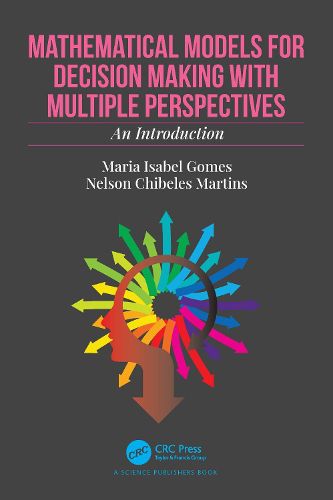Readings Newsletter
Become a Readings Member to make your shopping experience even easier.
Sign in or sign up for free!
You’re not far away from qualifying for FREE standard shipping within Australia
You’ve qualified for FREE standard shipping within Australia
The cart is loading…






This book brings together, in a single volume, the fields of multicriteria decision making and multiobjective optimization that are traditionally covered separately. Both fields have in common the presence of multiple perspectives of looking at and evaluating decisions to be taken but they differ in the number of available alternatives. Multicriteria approaches deal with decision processes where a finite number of alternatives have to be evaluated while, in multiobjective optimization, this number is infinite and the space of alternatives continuous. This book is written for students of applied mathematics, engineering, and economics and management, with no assumed previous knowledge on the subject, as well as for practitioners in industry looking for techniques to support decision making. The mathematical formalism is very low, so that all materials are accessible to most readers. Nonetheless, a rich bibliography allows interested readers to access more technical literature.
The textbook is organized in eleven chapters, each corresponding to a class of about two hours. A comprehensive set of examples is presented, allowing for a didactic approach when presenting the methodologies. Each chapter ends with exercises that are designed to develop problem-solving skills and to promote concepts retention.
$9.00 standard shipping within Australia
FREE standard shipping within Australia for orders over $100.00
Express & International shipping calculated at checkout
This book brings together, in a single volume, the fields of multicriteria decision making and multiobjective optimization that are traditionally covered separately. Both fields have in common the presence of multiple perspectives of looking at and evaluating decisions to be taken but they differ in the number of available alternatives. Multicriteria approaches deal with decision processes where a finite number of alternatives have to be evaluated while, in multiobjective optimization, this number is infinite and the space of alternatives continuous. This book is written for students of applied mathematics, engineering, and economics and management, with no assumed previous knowledge on the subject, as well as for practitioners in industry looking for techniques to support decision making. The mathematical formalism is very low, so that all materials are accessible to most readers. Nonetheless, a rich bibliography allows interested readers to access more technical literature.
The textbook is organized in eleven chapters, each corresponding to a class of about two hours. A comprehensive set of examples is presented, allowing for a didactic approach when presenting the methodologies. Each chapter ends with exercises that are designed to develop problem-solving skills and to promote concepts retention.